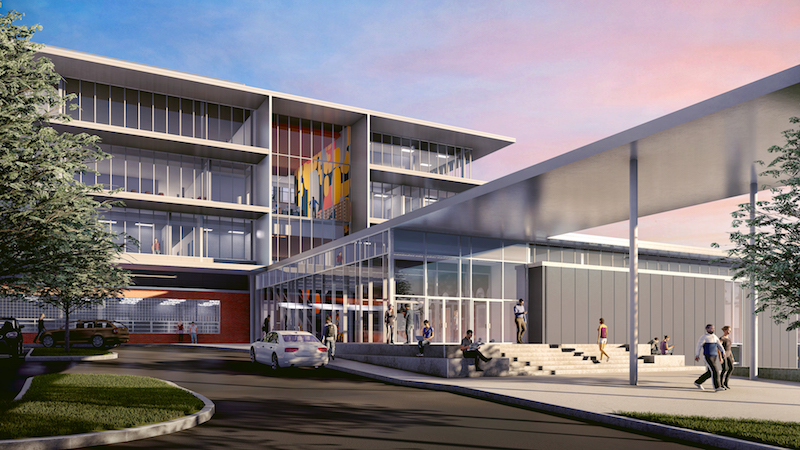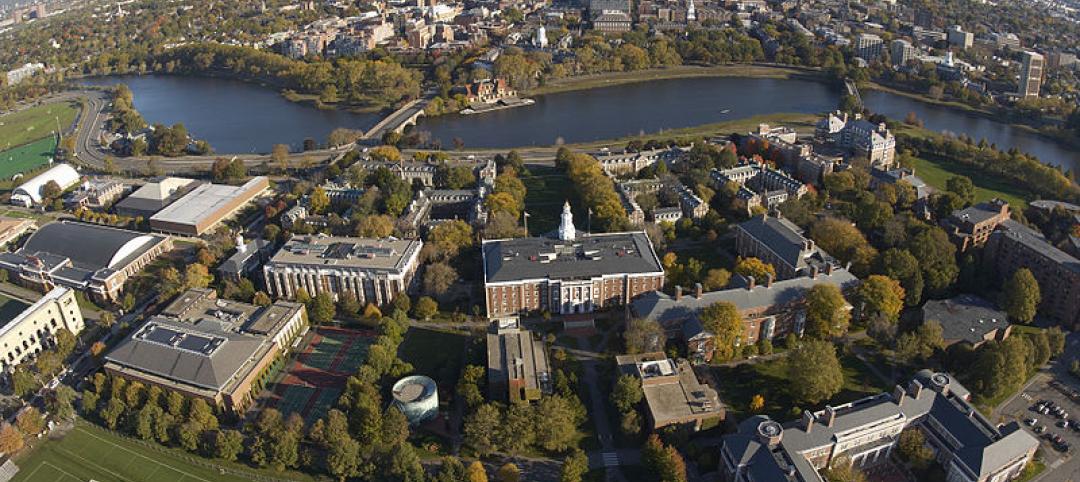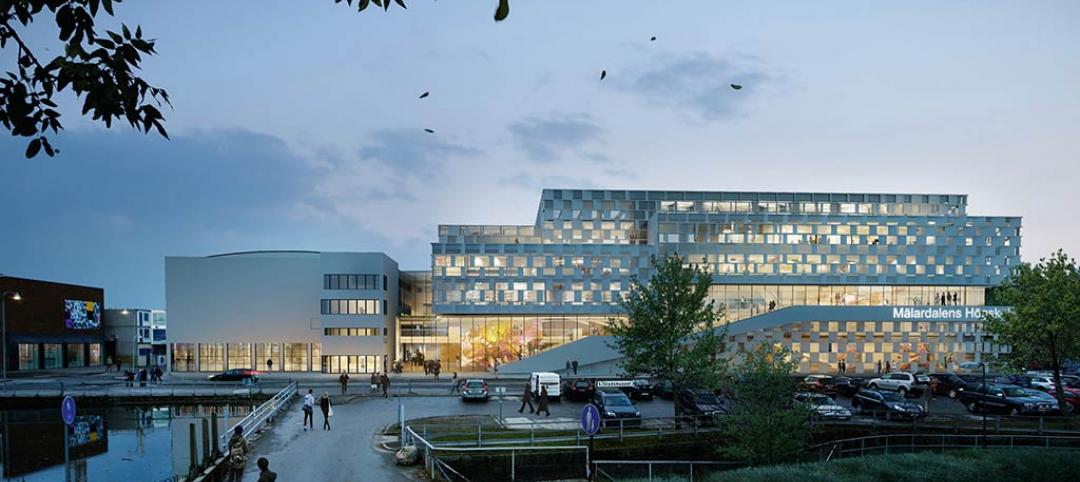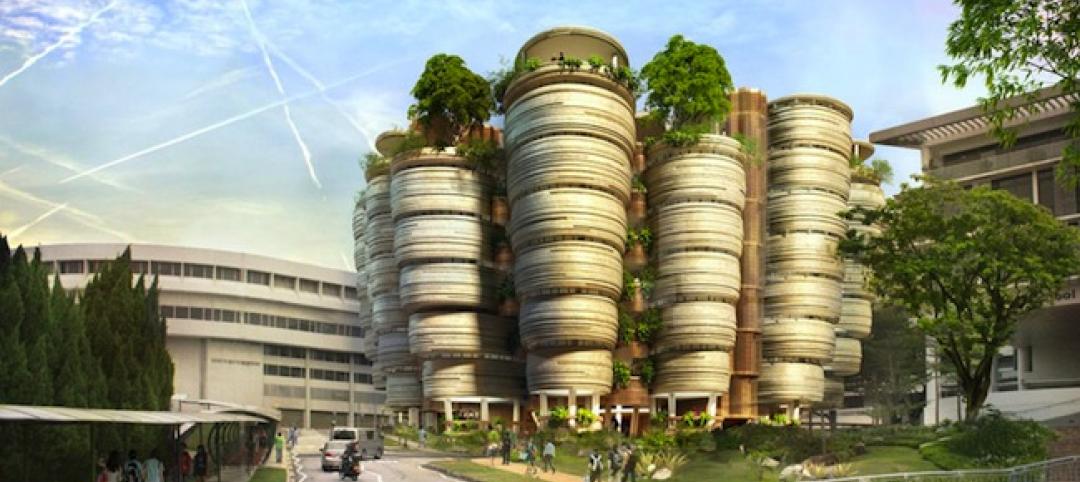The Eastside Memorial Early College High School and International High School, designed by Perkins+Will, will offer a STEM-focused curriculum that will provide specialized education for students with little to no proficiency in the English language.
The school, located in Austin, Texas, will sit on the site of the original L.C. Anderson High School, a historic African American high school that closed in 1971 following federal desegregation. The new facility will blend the old and new by incorporating elements of the original structure into the design scheme. The original, mid-century entrance, band hall, choir room, cafeteria, and an original classroom wing will all be preserved and rebuilt.
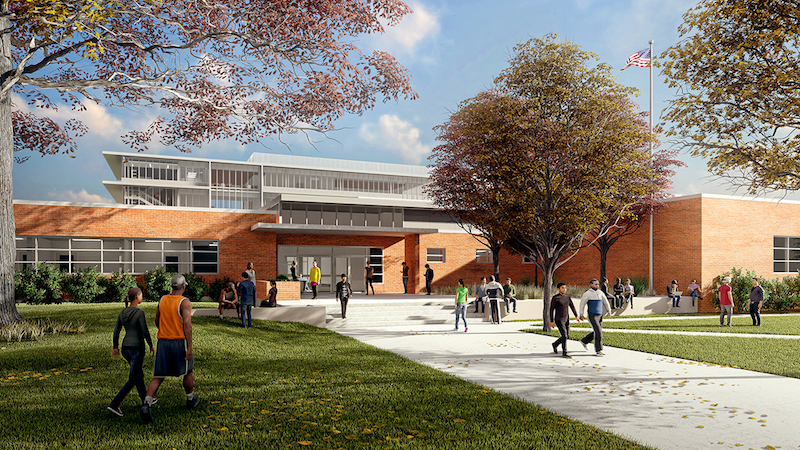 Courtesy Perkins+Will.
Courtesy Perkins+Will.
The entrance to the former location of the gym will become a community center entrance with a gallery that tells the stories of L.C. Anderson High School’s history. The gallery will include a timeline of the former school’s history, legacy medallions, and display cabinets for objects of historical significance.
See Also: University of Miami design/build program receives new immersive-learning facility
The low-profile red-brick building will be complemented by a new, taller section built primarily with metal and glass. The taller, four-story section of the building will feature learning space and student-focused classrooms. The school will feature maker labs, two gymnasiums, a health science lab, and a multi-use outdoor classroom courtyard with a performance stage, quiet reflection areas, and sensory gardens.
 Courtesy Perkins+Will.
Courtesy Perkins+Will.
The $80-million project represents the first ground up high school in Austin Independent School District in almost 20 years. The education facility will make use of passive heating and cooling, natural daylighting, an its proximity to public transportation and bicycle routes in an effort to achieve LEED Silver certification.
The school is slated for completion in 2021.
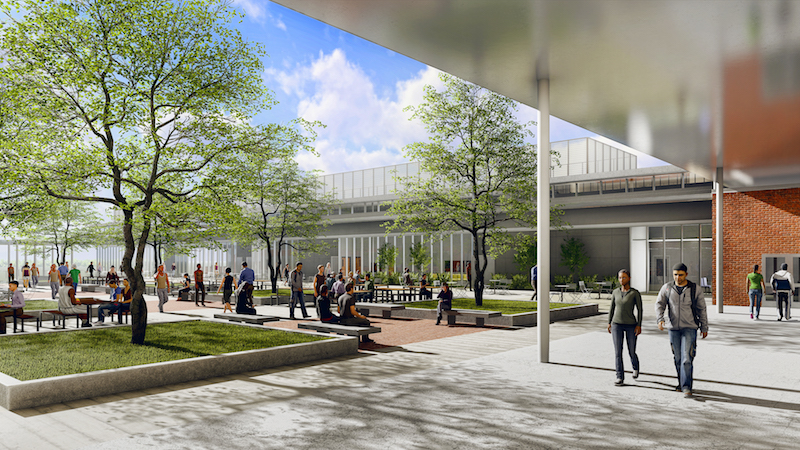 Courtesy Perkins+Will.
Courtesy Perkins+Will.
 Courtesy Perkins+Will.
Courtesy Perkins+Will.
Related Stories
| Jul 10, 2014
Berkeley Lab opens 'world's most comprehensive building efficiency simulator'
DOE’s new FLEXLAB is a first-of-its-kind simulator that lets users test energy-efficient building systems individually or as an integrated system, under real-world conditions.
| Jul 9, 2014
Harvard Business School to build large-scale conference center
Expected to open in 2018, the facility will combine the elements of a large-scale conference center, a performance space, and an intimate community forum. The new building will be designed by Boston-based William Rawn and Associates.
| Jul 7, 2014
7 emerging design trends in brick buildings
From wild architectural shapes to unique color blends and pattern arrangements, these projects demonstrate the design possibilities of brick.
| Jul 2, 2014
Emerging trends in commercial flooring
Rectangular tiles, digital graphic applications, the resurgence of terrazzo, and product transparency headline today’s commercial flooring trends.
| Jul 1, 2014
Winning design by 3XN converts modernist bathhouse to university library
Danish firm 3XN's design wins competition for a new educational facility for Mälardalen University in Sweden, which will house a library, communal spaces, and offices for 4,500 students and staff.
| Jun 23, 2014
Gehry's 'glass sail' cultural center for Foundation Louis Vuitton set to open in October
Comissioned by Bernard Arnault, American legendary architect Frank Gehry's newest structure in Paris for Foundation Louis Vuitton will house eleven galleries and an auditorium for performing arts.
| Jun 20, 2014
HOK releases proposal for Obama Library and Museum Campus
Proposal would locate the library in Chicago's historic Bronzeville neighborhood, aiming for urban revitalization as well as Living Building certification.
| Jun 20, 2014
First look: Hive-like 'Learning Hub' to be built in Singapore
In a competition to design a "Learning Hub" for students at Nanyang University in Singapore, London-based firm Heatherwick studio has won with a rounded, hive-like design.
| Jun 18, 2014
Study shows walkable urbanism has positive economic impact
Walkable communities have a higher GDP, greater wealth, and higher percentages of college grads, according to a new study by George Washington University.
| Jun 18, 2014
Arup uses 3D printing to fabricate one-of-a-kind structural steel components
The firm's research shows that 3D printing has the potential to reduce costs, cut waste, and slash the carbon footprint of the construction sector.


